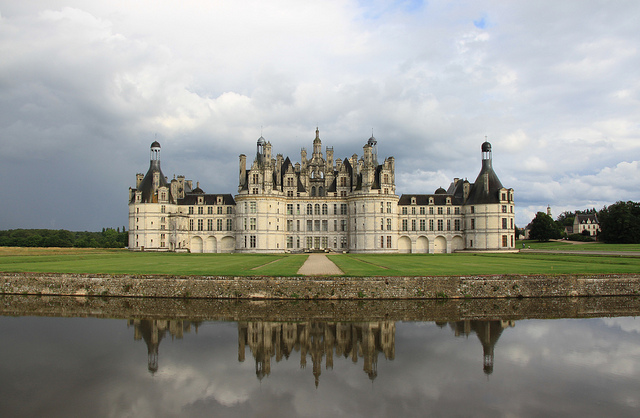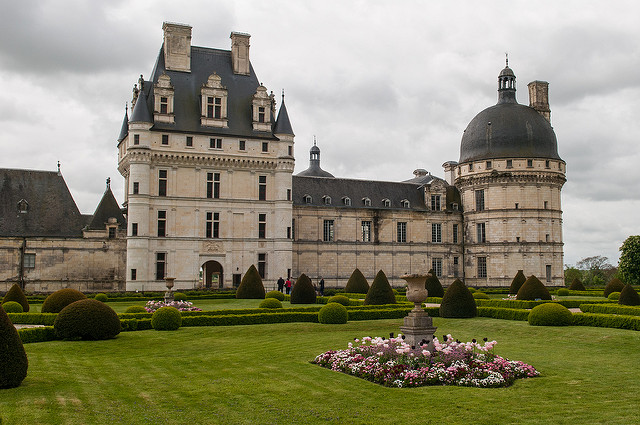Travel


Photos via Flickr Creative Commons
- A Taste Of Spanish Wine
Spanish wines have always been a favourite with people travelling around Europe, and with good reason; they produce beautiful wines that are not only tasty and easily accessible, but are also much more affordable than similar wines from more-established...
- Gaspereau Valley Wine
It is only recently that Nova Scotia's Annapolis Valley area has become a popular winery region. The smaller Gaspereau Valley next door has also taken off as a prime location for growing grapes. There are now eleven producing wineries in the Annapolis...
- The Top 5 Restaurants To Dine At In Paris
France has always been known for its exquisite cuisine. French food is respected and eaten all over the world, and those who choose to visit France in person are sure to stumble upon delicacies in every corner. Especially Paris is a paradise for gourmets...
- Croatia's Zagorje Region: The Next Travel Frontier
Croatia’s stunning stretches of coastline; wealth of picturesque islands and historical towns and cities has already made it a firm fixture on the tourist map. Whether you are heading to Croatia to stroll along Dubrovnik’s cobbled streets or to take...
- Following The Wine Routes Of Greece
Wine is an important part of the culture of Greece, both in terms of social traditions and religious significance. Being a Mediterranean country, the climate is perfectly suited to growing a number of varieties of grapes, from which wine is produced....
Travel
Loire Valley. More Than Just Stunning Châteaux
When the Loire Valley is calling you, if you happen to be in UK, it is easy to jump on a ferry to France and make your way to the fertile land that was once the playground of kings and their courts. Everybody knows these kings left behind a trail of magnificent châteaux ranging from exuberant Renaissance to Classical grandeur. But the Loire Valley offers more than just castles. Ancient cloistered abbeys, majestic cathedrals such as those at Chartres and Bourges, and prosperous modern cities like Tours are all part of the rich heritage of this engaging area. Picturesque rural Loire, with its dense forests, misty marshes, windswept coastline and neat vineyards, tempts the visitor off the beaten track. These two pages give an at-a-glance flavor of each region, plus a quick guide to where to go and what to see and do.

The Loire Valley, world-famous for its beautiful châteaux, has long been described as exemplifying la douceur de vivre: it combines a leisurely pace of life, a mild climate, mellow wines and the gentle ways of its inhabitants. The overall impression conveyed by the region is one of an unostentatious taste for the good things in life.
The Loire as a region is far from being a cultural and historical anachronism, although the wealth of well-preserved historical monuments harks back to the past. Many local people are surprisingly proud of the nuclear power stations at Avoine-Chinon and at St-Laurent-des-Eaux near Beaugency, both symbols of the region’s role in the technological revolution. The well-publicized (and successful) campaign in the mid-1980s to have the high-speed TGV train rerouted was based not on any intrinsic dislike of new-fangled schemes, but on alarm at the potential damage to the bottles of wine stored in their underground cellars close to the planned track.
In this central region of France, the people have neither the brisk, sometimes brusque, demeanor of their northern counterparts visited so often by so many tourists from England that jump on quick ferries from UK, nor the excitable nature of the southern provinces, to which the Italian and the Spanish tourists pay regular visits. The People in the central region of France get on peacefully with their lives, benefiting from the prosperity generated not only by the region’s centuries old popularity with French and foreign visitors of more diverse nature, coming from all over the world, but also by a fertile soil and a favourable climate, which rarely succumbs to extremes of heat or cold.
In this central region of France, the people have neither the brisk, sometimes brusque, demeanor of their northern counterparts visited so often by so many tourists from England that jump on quick ferries from UK, nor the excitable nature of the southern provinces, to which the Italian and the Spanish tourists pay regular visits. The People in the central region of France get on peacefully with their lives, benefiting from the prosperity generated not only by the region’s centuries old popularity with French and foreign visitors of more diverse nature, coming from all over the world, but also by a fertile soil and a favourable climate, which rarely succumbs to extremes of heat or cold.

The way of life in the Loire Valley remains largely anchored to the traditional values of la France profonde, the country’s conservative heartland – seeking to perpetuate a way of life that has proved its worth over the centuries. This is particularly true of the Berry, the easternmost region of the Loire covered in this guide. It is the geographical centre of the country – several villages claim the honor of being situated at “the heart of France” – and it seems to the visitor charmingly off the beaten track. It comes as no surprise to discover that folk traditions and, some say, witchcraft are still part of everyday life in some of these timeless villages. In November 2000, UNESCO made the Loire Valley one of its protected areas of natural beauty.
The opportunity to stay in a private château is one of the many treats for visitors to the Loire Valley, where hospitality is a serious business. Even in Orléans, whose proximity to Paris has led to its reputation as a dormitory town, a warm welcome in hotels and restaurants is assured. And in the towns and villages of Touraine and Anjou, conviviality is everywhere apparent. The many fairs, fêtes and festivals devoted to local wines and produce – garlic, apples, melons or even chitterling sausages – bear witness to the large part, even by French standards, that food and drink play in the social life of these old provinces.
They also play a major role in the region’s economy: around 12 per cent of the local population is involved in
agriculture or the food industry in some way. Many primeur (early fruit or vegetable) in the markets and restaurants of Paris has been transported from the fertile fields and orchards beside the Loire, and the region’s melons and asparagus are sold all over the country. So are the button mushrooms, known as champignons de Paris (Paris mushrooms), grown in tufa quarries near Saumur.
Although some local wines are reputed not to travel well, many of them do so very successfully, not only in France but also abroad, adding to the region’s prosperity. In terms of the volume of production, the region ranks third in France and, although production is on a smaller scale than the famous wine giants of Bordeaux and Burgundy, the quality and popularity of Loire wines are both increasing. Sancerre and Muscadet are probably the best known, but others, such as Vouvray and Bourgueil, are also much in demand.
The restaurants and hotel dining rooms of the Loire Valley take full advantage of the excellent produce available locally – no wonder so many Parisian families have been attracted to the area. Just as once the nobility of France established their châteaux and stately homes in the area, now wealthy Parisians are flocking to the Loire Valley to buy résidences secondaires. The influx has been swelled in recent years with the advent of the TGV, which takes less than an hour to reach the region from Paris.
Photos via Flickr Creative Commons
- A Taste Of Spanish Wine
Spanish wines have always been a favourite with people travelling around Europe, and with good reason; they produce beautiful wines that are not only tasty and easily accessible, but are also much more affordable than similar wines from more-established...
- Gaspereau Valley Wine
It is only recently that Nova Scotia's Annapolis Valley area has become a popular winery region. The smaller Gaspereau Valley next door has also taken off as a prime location for growing grapes. There are now eleven producing wineries in the Annapolis...
- The Top 5 Restaurants To Dine At In Paris
France has always been known for its exquisite cuisine. French food is respected and eaten all over the world, and those who choose to visit France in person are sure to stumble upon delicacies in every corner. Especially Paris is a paradise for gourmets...
- Croatia's Zagorje Region: The Next Travel Frontier
Croatia’s stunning stretches of coastline; wealth of picturesque islands and historical towns and cities has already made it a firm fixture on the tourist map. Whether you are heading to Croatia to stroll along Dubrovnik’s cobbled streets or to take...
- Following The Wine Routes Of Greece
Wine is an important part of the culture of Greece, both in terms of social traditions and religious significance. Being a Mediterranean country, the climate is perfectly suited to growing a number of varieties of grapes, from which wine is produced....
